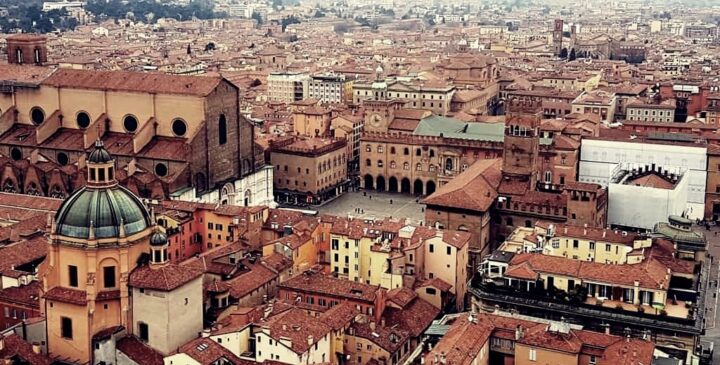
Bologna: The best sights and tips
Bologna, the capital of the northern Italian region of Emilia-Romagna, is a popular travel destination.
In addition to some important sights, the city also attracts tourists with its exceptionally good cuisine.
Because people in Bologna like to eat well and eat a lot, the capital of the Emilia-Romagna region is also called “La Grassa” – the fat one. Tortellini, tagliatelle, mortadella and bolognese sauce come from Bologna, among other things. But it is not only the many gastronomic specialties that make the historic metropolis with around 400,000 inhabitants so popular as a travel destination. Many tourists visit Bologna mainly because of the old town, which is well worth seeing, and the Bolognese people, who are considered to be particularly friendly.
Destruction and rebuilding of Bologna
The inhabitants of the city have been used to travelers coming to Bologna for thousands of years. Even in Roman times, the city, then Bononia, was an important traffic junction. Here the most important road in the Po Valley, the Via Aemilia, crossed with the Via Flamina, which led to Arezzo in Tuscany.
But the decline of ancient Rome also had dire consequences for Bononia. The city was destroyed and plundered. The patron saint of Bologna, Bishop Petronius, initiated the renewal and reconstruction of Bologna with the construction of the Santo Stefano church. Despite constantly changing rulers, the city grew into one of the most important and largest centers in Europe in the Middle Ages. In 1506, Pope Julian II’s troops occupied the city. Until 1796 Bologna belonged to the Papal States.
Important sights in Bologna
Two towers built in 1300 are considered the city’s landmarks by “Peppone” actor Gino Cervi (1901-1974), musician Lucio Dalla (1943-2012) and former ski world champion Alberto Tomba: the Torre Garisenda and the Torre degli Asinelli , both almost 100 meters high. As can still be seen today in San Gimignano, for example, in the Middle Ages wealthy families had so-called family towers built to show their prosperity.
Meeting point for tourists in the center of the old town is the Piazza Maggiore with the Neptune Fountain and the mighty Gothic Basilica of San Petronio. The Basilica di Santo Stefano, which is more than 1500 years old, can also be found nearby. The world’s third oldest university, which was founded in 1088, is also famous. The city library, which is open to the public, is housed in the former main building, the Palazzo Archiginnasio.
Bologna’s arcades are also world-famous – shops and stores below, magnificent palazzi above. Here you can stroll and shop in any weather. In total, the city’s arcades are more than 38 kilometers long – further evidence of the considerable wealth of the Bolognese.
Categories: General
